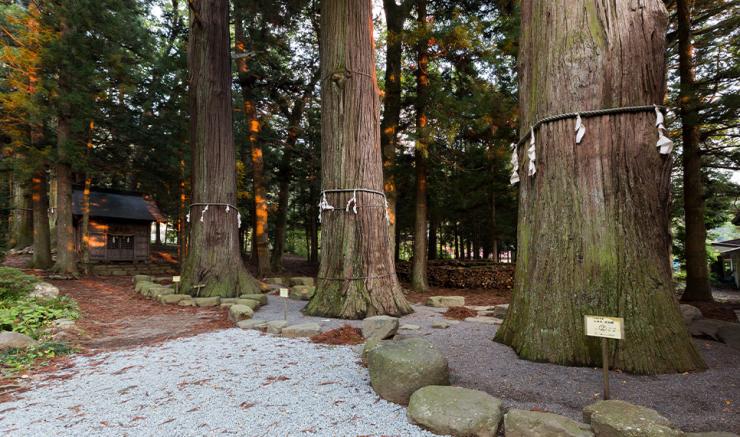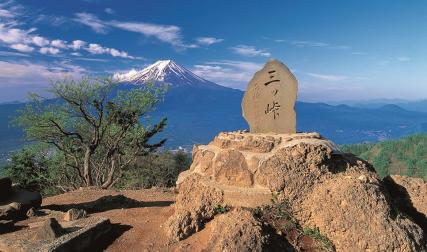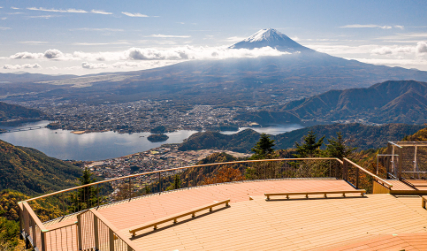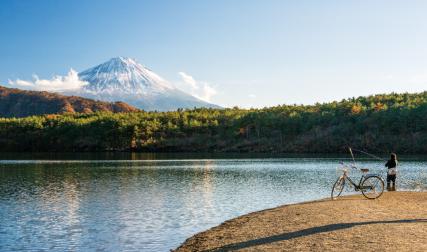Kawaguchi Asama Shrine
Main content starts here.

Kawaguchi Asama Shrine is one of approximately 1,300 Asama shrines in Japan that enshrine the deity of volcanoes in general and Mount Fuji in particular. The shrine is part of the Mt. Fuji UNESCO World Cultural Heritage site, designated in 2013.
Asama shrines are dedicated to Konohanasakuya-hime (“cherry blossom princess”), the goddess of Mt. Fuji and all volcanoes in Japanese mythology. The vast majority of Asama shrines are within sight of Mt. Fuji; where this is not the case because of distance or obstructions, miniature replicas of Mt. Fuji made with rocks from the mountain are erected within the shrine grounds.
Though the origin of the Asama faith is unclear, some of the shrines are known to date back to at least 29 BCE. Many major Asama shrines, including Kawaguchi Asama, were built in 865 CE, the year after Mt. Fuji had a major eruption. The mountain purportedly erupted for 10 consecutive days, spewing cinders and ash as far away as Tokyo Bay. Kawaguchi Asama Shrine was established on the command of Emperor Seiwa in the hope of placating the volcano deity.
Kawaguchi Asama Shrine is particularly loved for its striking cedar avenue along the main approach, as well as the seven sacred cedars on the shrine precincts. These are deified––note the shimenawa ropes around them––and are old-growth trees thought to be at least 1,200 years old. Two festivals taking place on April 25 and July 28 respectively see performances of a ritual dance, the Chigo no Mai, meant to appease the volcano goddess’s spirit and prevent further eruptions and earthquakes.
Category
Share
Venue Address
401-0304 1 Kawaguchi, Fujikawaguchiko-machi, Minamitsuru-gun
-

Nature & Outdoors
-

Nature & Outdoors
-

Nature & Outdoors
Home of Mt. Fuji > Discover > Kawaguchi Asama Shrine